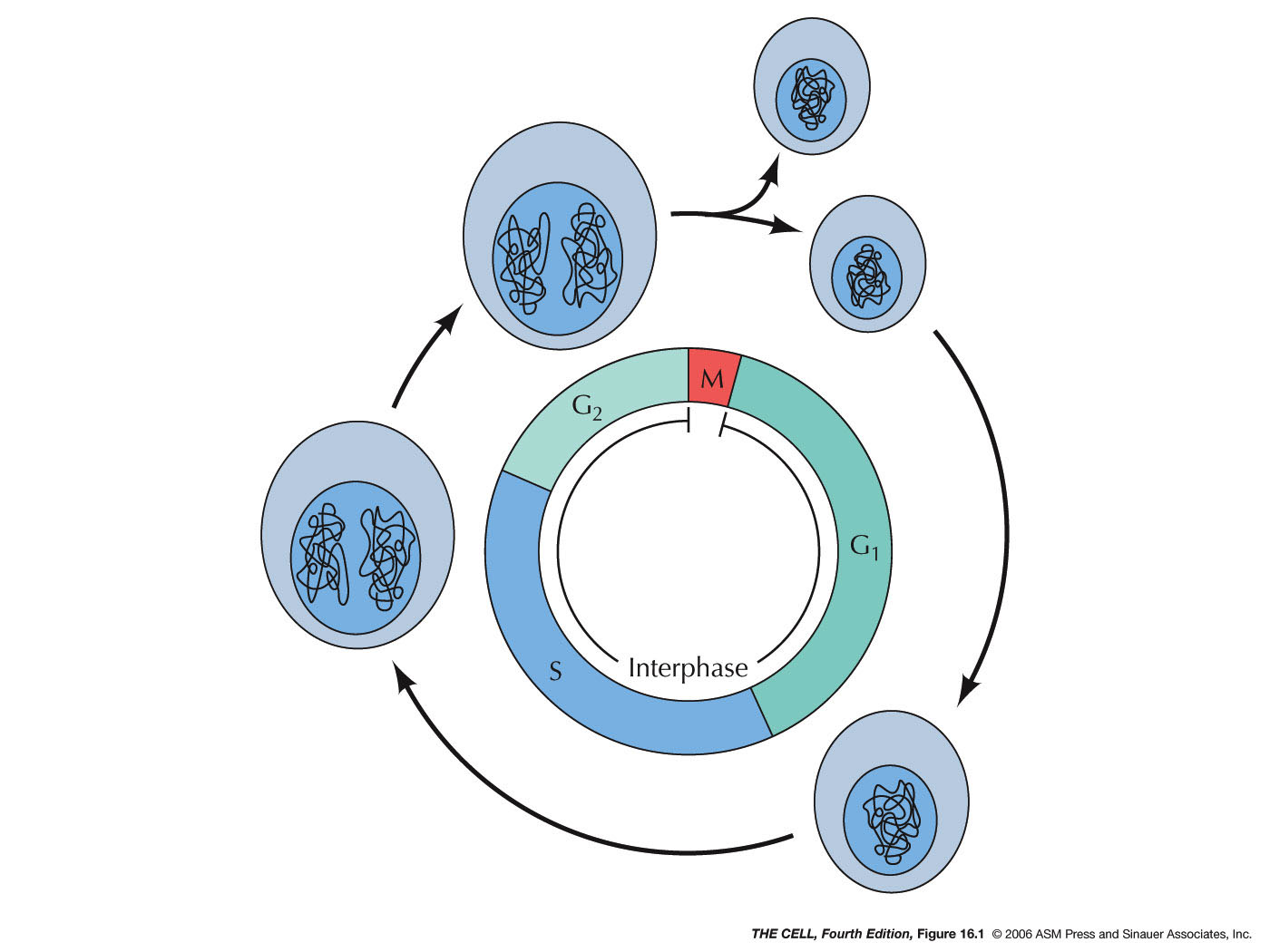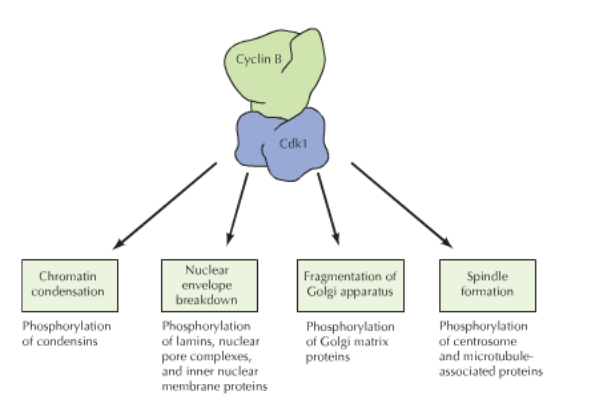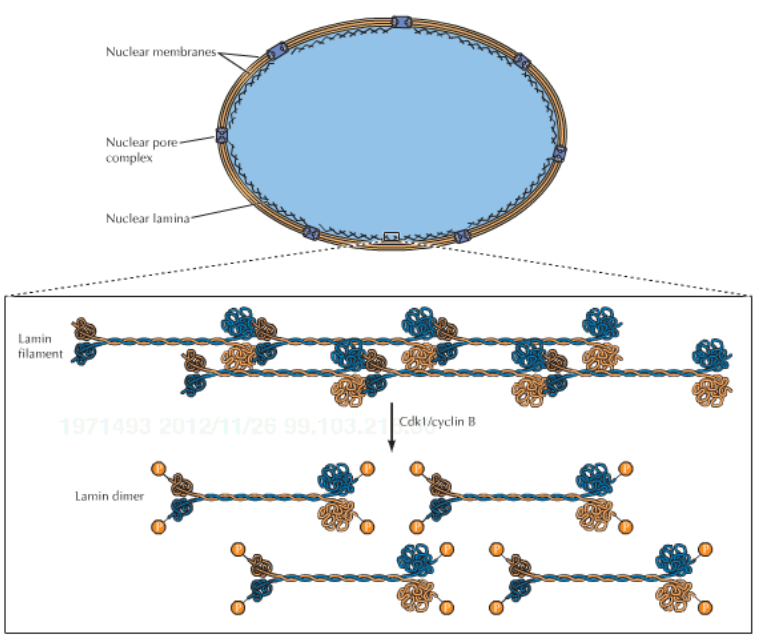| The events of the cell cycle are
intricately regulated in eukaryotes. When this regulation
goes awry, one possible result is cancer. |
- The Cell Cycle:
Dividing cells undergo the processes of of cell growth,
DNA replication, mitosis, and cytokinesis. This cycle is
the cell cycle and consists of G1,
S, G2, and M. S
(synthesis) is the phase during which DNA replication
occurs. It is preceded by G1,
during which cell growth is apparent. S is followed
by G2 then by M
(mitosis). Non-dividing cells exit G1
and enter the stage called G0
if the certain growth factors are not present. This is
the restriction point (analogous to START in yeast).
|

|
- The Regulation of
the Cell Cycle and Cell Cycle Checkpoints:
At various points in the cell cycle, the cell stops
and checks to make sure everything is in order before
proceeding. These are called checkpoints and there are
4 major ones in the cell cycle:
- The G1/S
Checkpoint (a DNA-Damage Checkpoint): At
this checkpoint near the end of G1,
the cell cycle will halt if the DNA has damage that
needs to be repaired.
- The S Checkpoint
(a DNA-Damage Checkpoint): At this
mid-S checkpoint also the cell cycle will halt if
the DNA has damage that needs to be repaired. (Research
news)
- The G2/M
Checkpoint (a DNA-Damage
Checkpoint): At this checkpoint
near the end of G2,
the cell cycle will halt if DNA replication is not
complete or it DNA damage is detected. (Regulated by
MPF, below)
- The M Checkpoint (Spindle-Assembly
Checkpoint): At this checkpoint (also
called the spindle assembly checkpoint) around
anaphase, mitosis is halted unless the chromosomes
have properly aligned. This checkpoint is why cells
will not divide when a spindle inhibitor like
colchicine is added.
|
|
- MPF, Cyclin B,
and Cdk1: an Example of the Mechanism of Cell
Cycle Regulation: The mechanism of
regulation of the entry into mitosis at the G2/M
checkpoint
involves
the active form of the protein MPF (cyclin B/Cdk1
complex phosphorylated at one amino acid,
dephosphorylated at two other amino acids). (MPF
stands for "maturation promoting factor.") This is
related to the continual
synthesis of cyclin, its degradation, a kinase
that phosphorylates Cdk1, and a phosphatase that
dephosphorylates Cdk1. DNA damage activates a separate
kinase that results in deactivation of MPF. (Cell
cycle control video.)
- Examples of Cdk1/Cyclin B's
Action: Condensins (protein complexes that
are responsible for chromosome condensation during
mitosis and meiosis) are activated by Cdk1/cyclin B
phosphorylation. Also, the breakdown of the nuclear
envelope that occurs at the outset of prophase (or
prophase I). The membrane breakdown involves the
phosphorylation of lamins by Cdk1/cyclin B, causing
their depolymerization. (Other cyclins initiate other
events: video
at about 6:30.)
- Other Genes/Factors: A tumor
suppressor gene on the short arm of chromosome 17
makes the p53 protein. When DNA is damaged, this
protein causes other proteins to bind to Cdk thereby
inactivating it, so the cell cycle halts. p53 is also
involved in stimulating DNA repair, and, if the cell
is damaged beyond repair, stimulating apoptosis
(programmed cell death). A defective p53 gene will
allow cells that have damaged DNA to continue to
divide, thus possibly leading to cancer. People with
only one functional copy of the p53 gene have a high
chance of developing tumors, a disease known as
Li-Fraumeni syndrome
(http://en.wikipedia.org/wiki/Li-Fraumeni_syndrome).
|


|
 Home
Home


